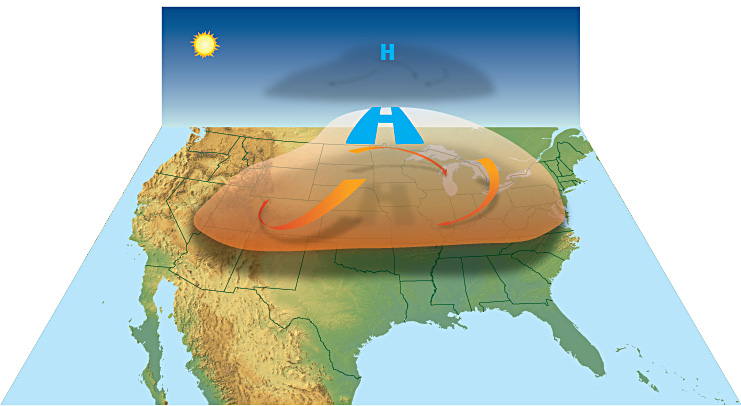| Listen to our audio presentation: Ancient Bond Between Dogs and Humans |
The recent spate of extreme weather conditions across North America has put more than 70 million Americans under heat alerts and affected four Canadian provinces. This unprecedented heatwave is a result of a high-pressure system known as a “heat dome,” which traps warm air over a region for an extended period.
Record-Breaking Temperatures Across the U.S.
The National Weather Service (NWS) has reported that temperatures in parts of the U.S. could exceed 100°F (38°C) this week. Chicago has already set a new daily temperature record, surpassing the previous high of 96°F recorded in 1957. Other major cities, including New York, Philadelphia, and Washington, are also experiencing sweltering conditions.
Canada’s Heat Warnings
In Canada, heat warnings have been issued in New Brunswick, Nova Scotia, Ontario, and Quebec, with officials cautioning residents about dangerously hot and humid weather. The extreme heat is a serious concern, with potential health risks, including heat stroke and heat exhaustion.
Impact of Climate Change
Scientists assert that climate change is intensifying the frequency and severity of extreme weather events. The ongoing heatwave is a stark reminder of the broader climatic shifts occurring globally. As temperatures rise, the likelihood of experiencing similar heatwaves increases, posing significant challenges for public health and safety.
Responses and Precautions
Officials across affected regions are taking measures to mitigate the impact of the heat. Cooling centers have been opened, and residents are urged to limit outdoor activities, stay hydrated, and check on vulnerable individuals such as the elderly and those with health conditions. New York Governor Kathy Hochul has activated the National Guard to assist with heat-related emergencies.
Wildfires and Other Weather Extremes
In addition to the heat, other extreme weather phenomena are affecting different parts of North America. Firefighters are battling a wildfire north of Los Angeles, prompting evacuations. Meanwhile, Texas is preparing for heavy rainfall due to an approaching storm, and Montana is experiencing rare June snowfall.
Health Risks and Safety Measures
Extreme heat is the leading weather-related cause of death in the U.S., surpassing fatalities from floods, tornadoes, hurricanes, and lightning. Health officials emphasize the importance of recognizing symptoms of heat-related illnesses. Heat stroke, a life-threatening condition, manifests as a body temperature above 103°F, red or hot skin, rapid pulse, and potential loss of consciousness. Immediate medical attention is crucial.
Heat exhaustion, while less severe, also requires prompt attention. Symptoms include clammy skin, excessive sweating, weak pulse, and dizziness. Ensuring proper hydration, using air conditioning, and avoiding strenuous activities during peak heat are essential preventive measures.
The current heatwave gripping North America underscores the urgent need for awareness and preparedness in the face of extreme weather events. As the change in weather continues to alter weather patterns, such occurrences may become more frequent, necessitating robust public health responses and individual precautions to safeguard lives.
The hottest day on record was on July 10, 1913, in Furnace Creek Ranch, Death Valley, California, USA. On this day, the temperature reached an astonishing 134°F (56.7°C), making it the highest temperature ever reliably recorded on Earth. This extreme temperature was measured by the United States Weather Bureau (now known as the National Weather Service). Death Valley is known for its extreme heat, and this record stands as a testament to the area’s harsh climatic conditions.
Resources
BBC News: One in five Americans under extreme weather alerts
National Weather Service: Severe Thunderstorms Across the Upper Mississippi Valley and Central Plains; Excessive Rainfall Along the Texas Coast; Hot Conditions from the Ohio Valley to the Northeast
Federal Emergency Management Agency (FEMA): Heat Stroke Signs and Safety Measures

